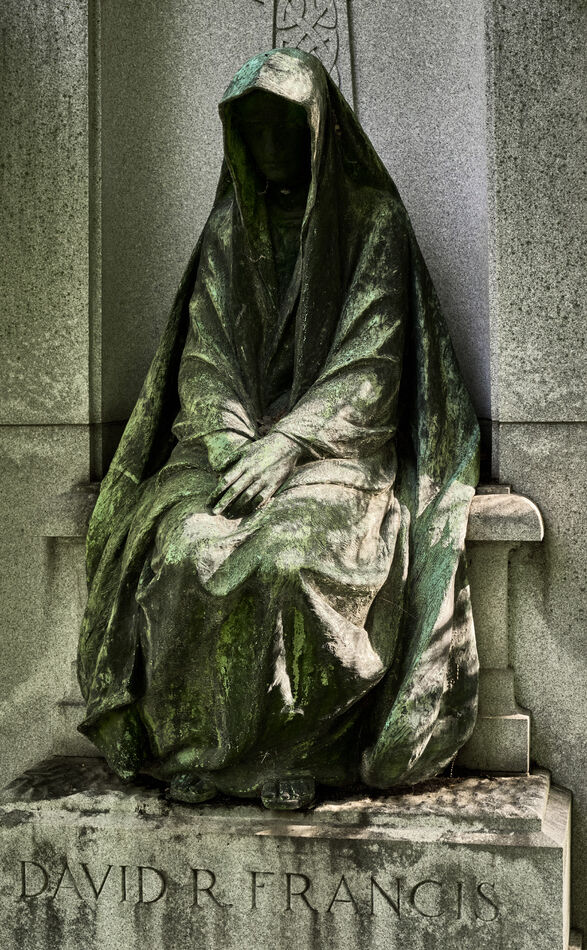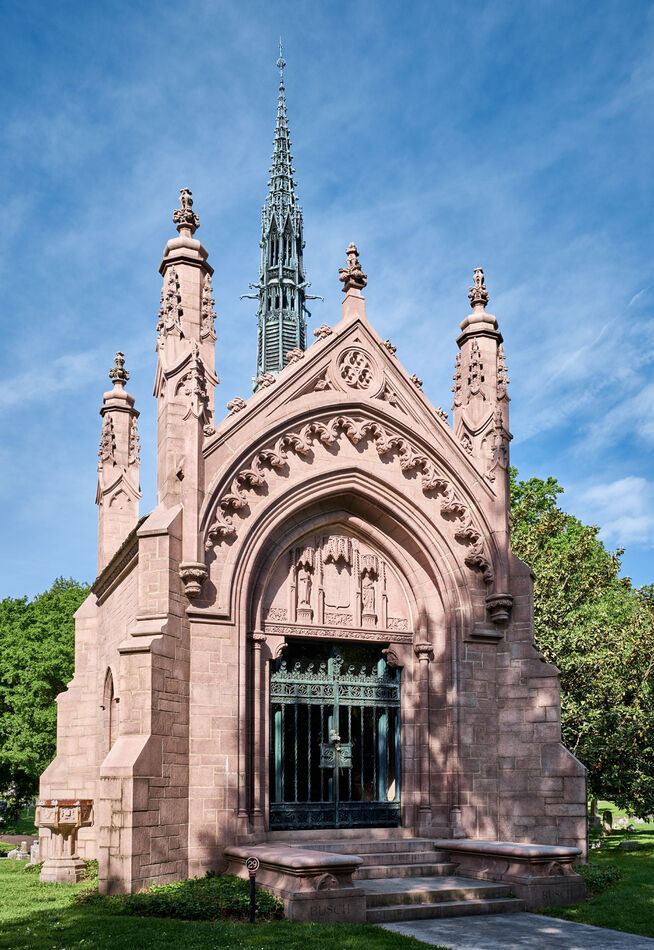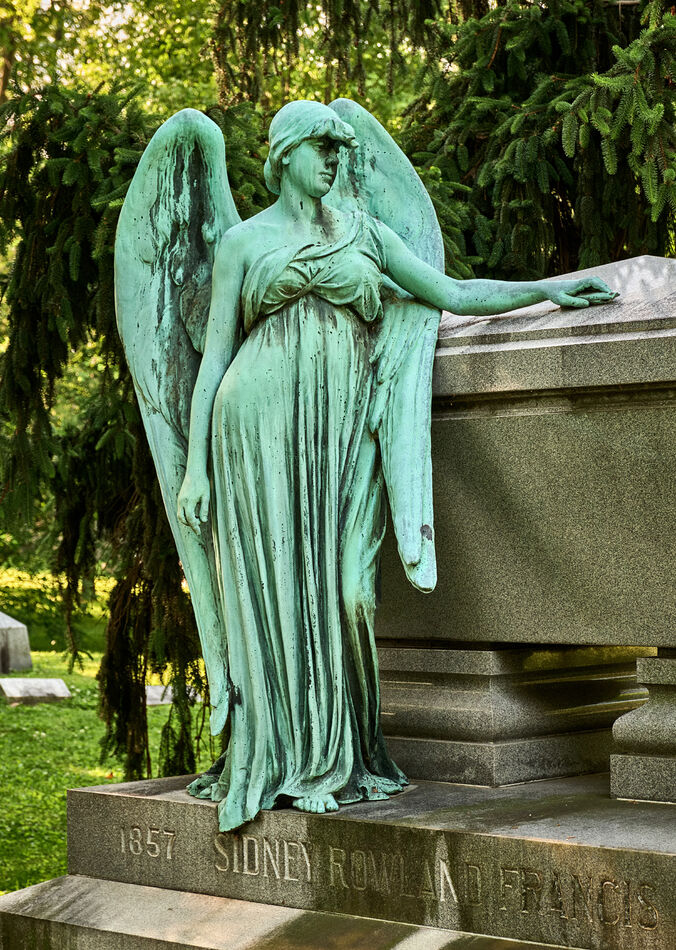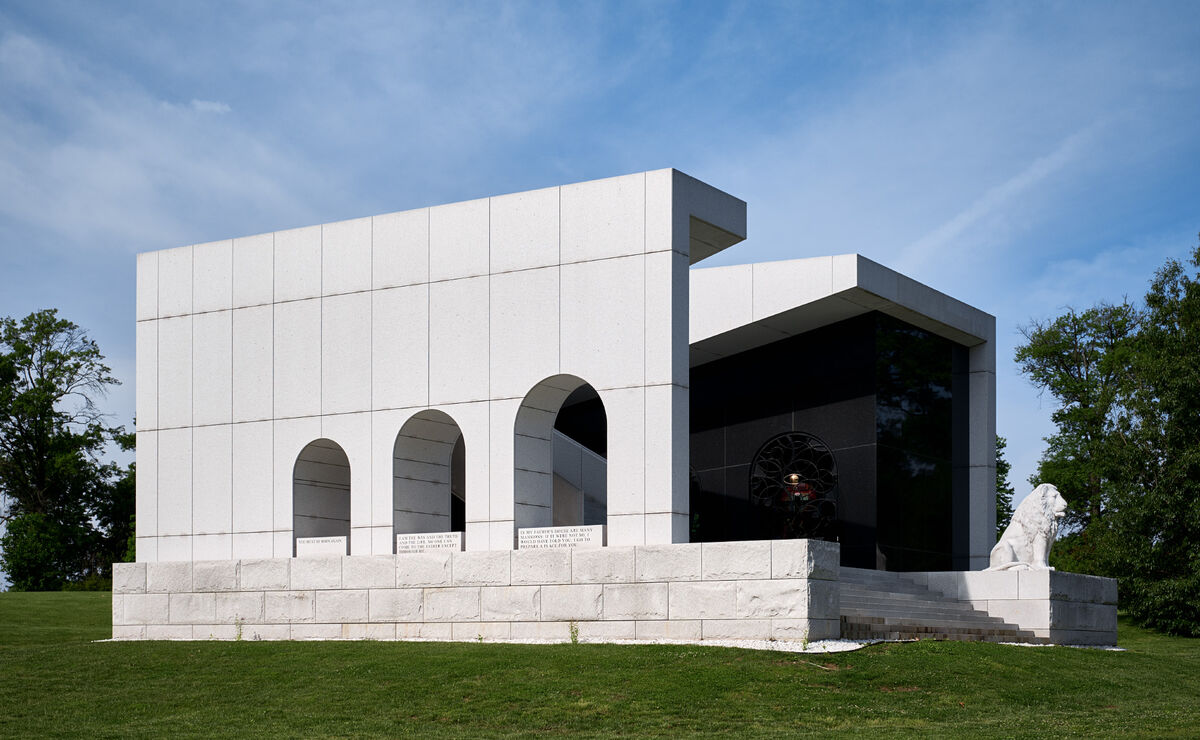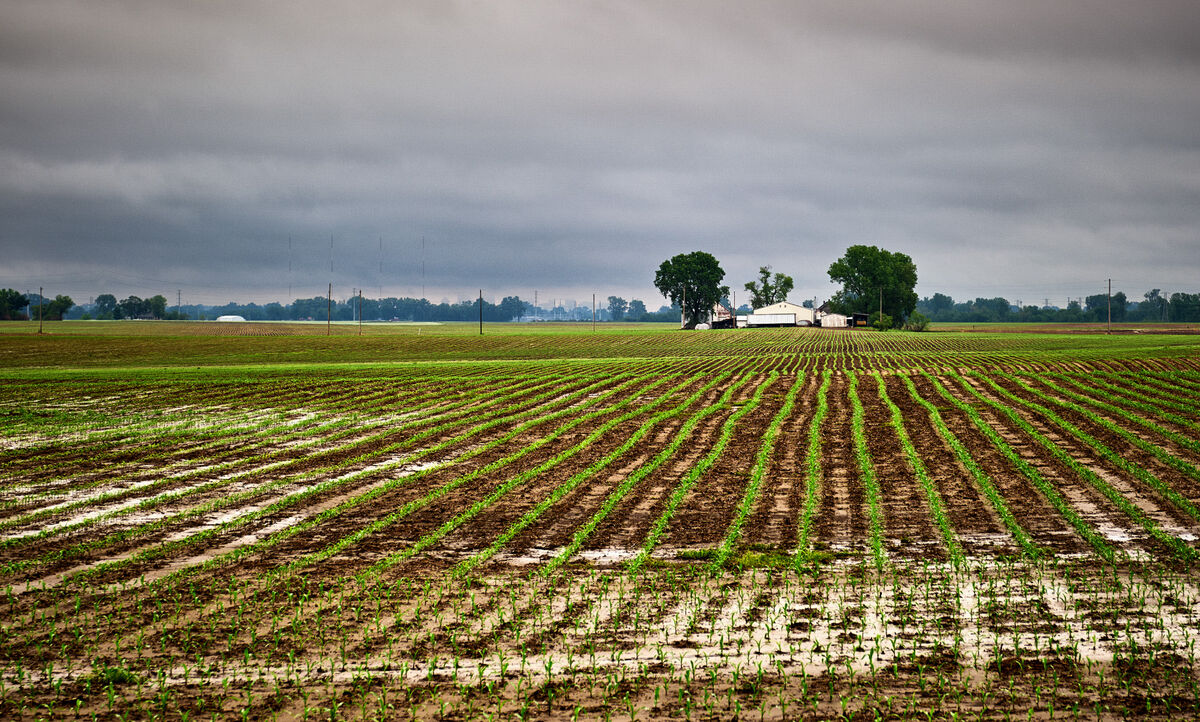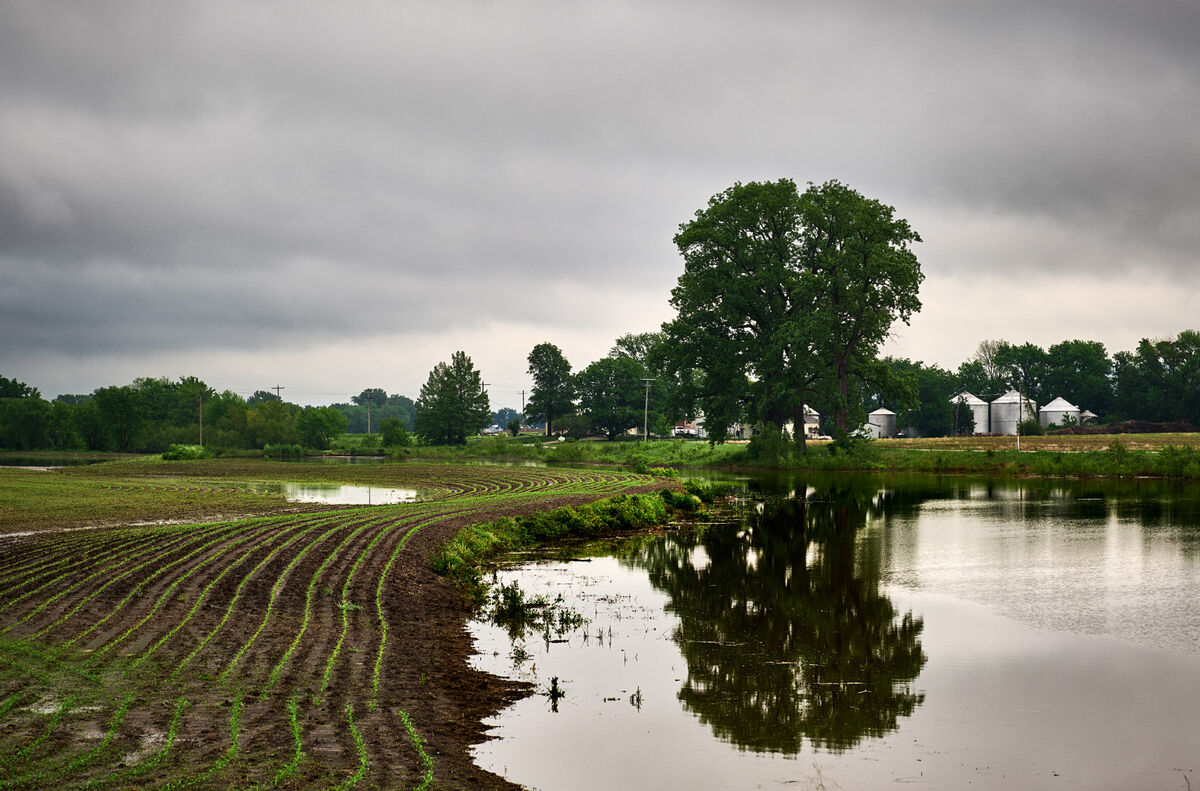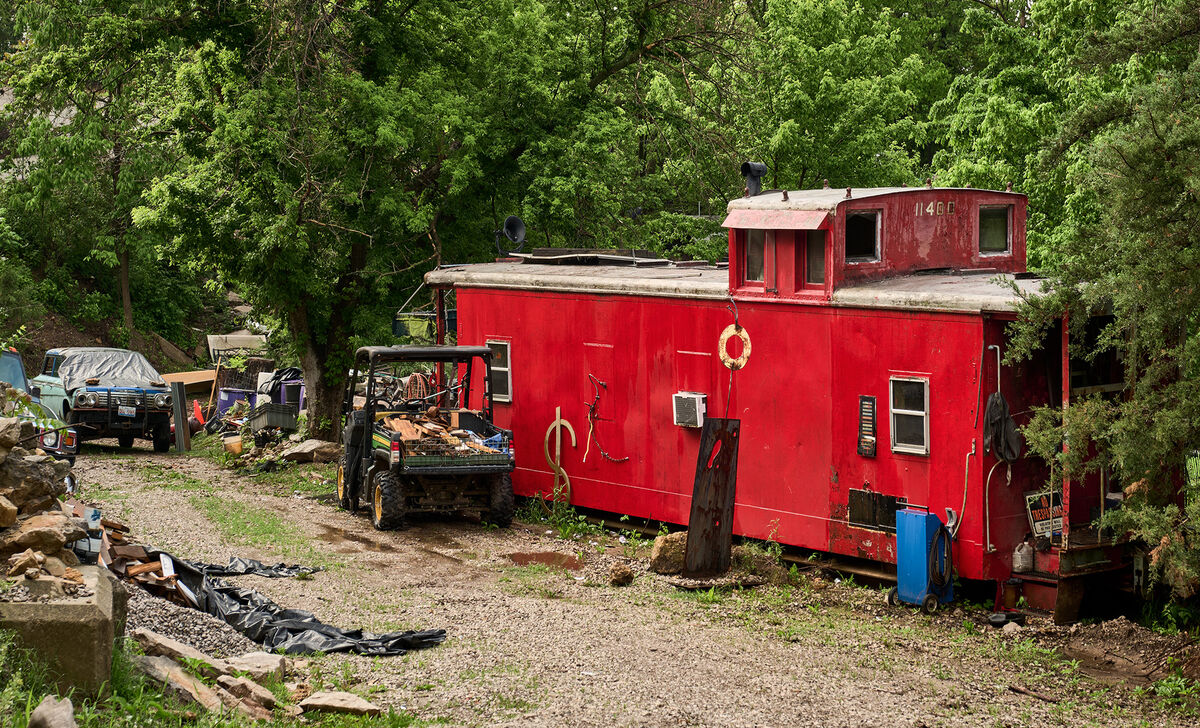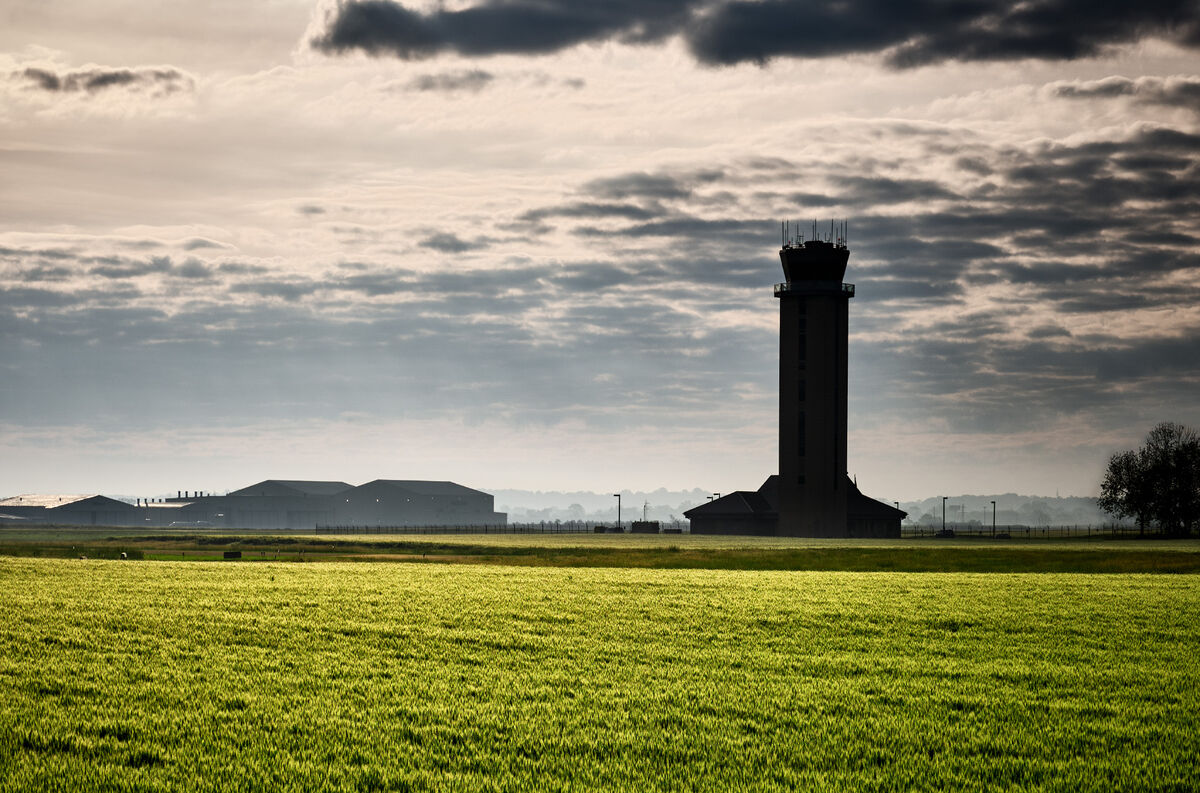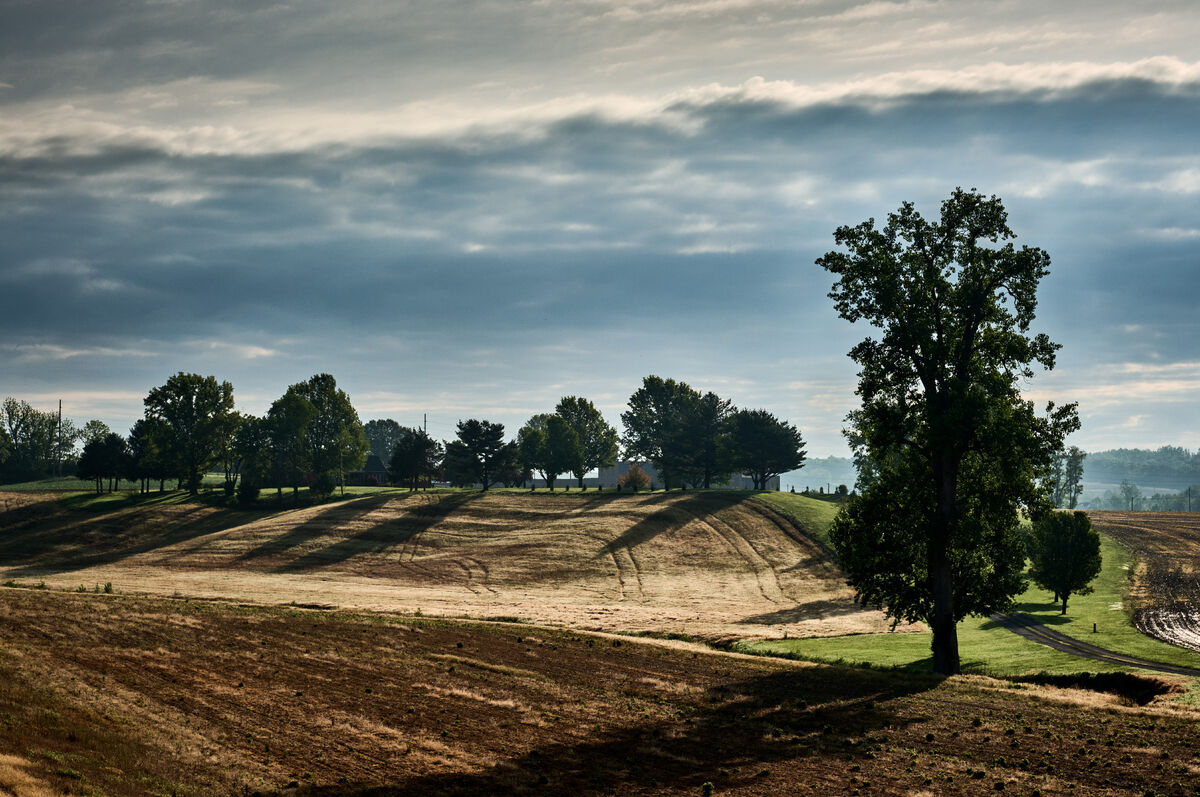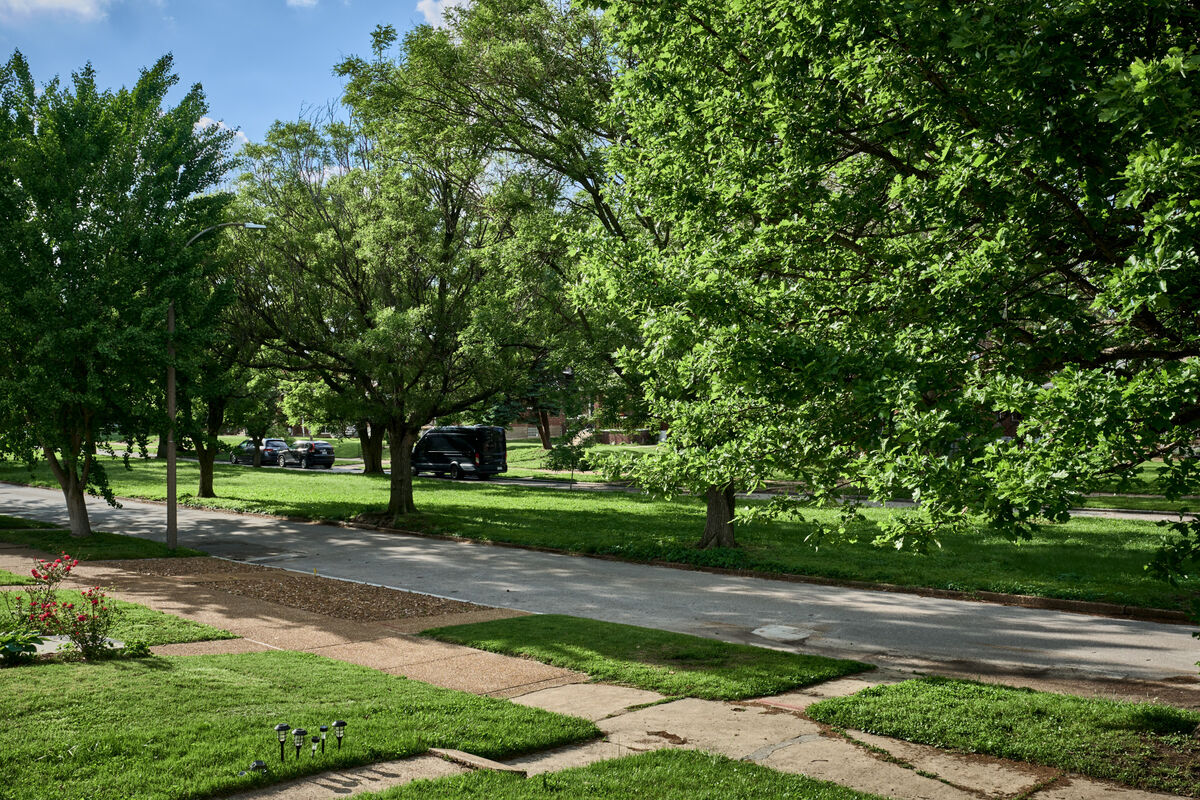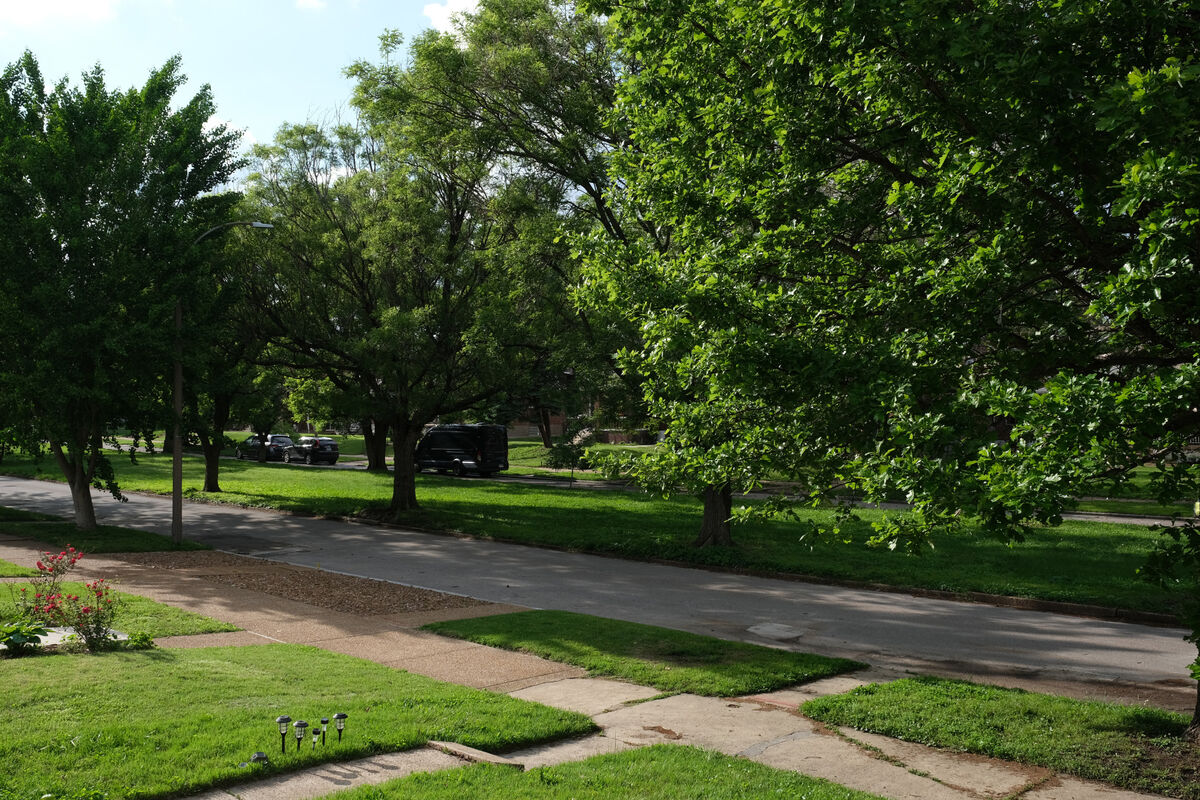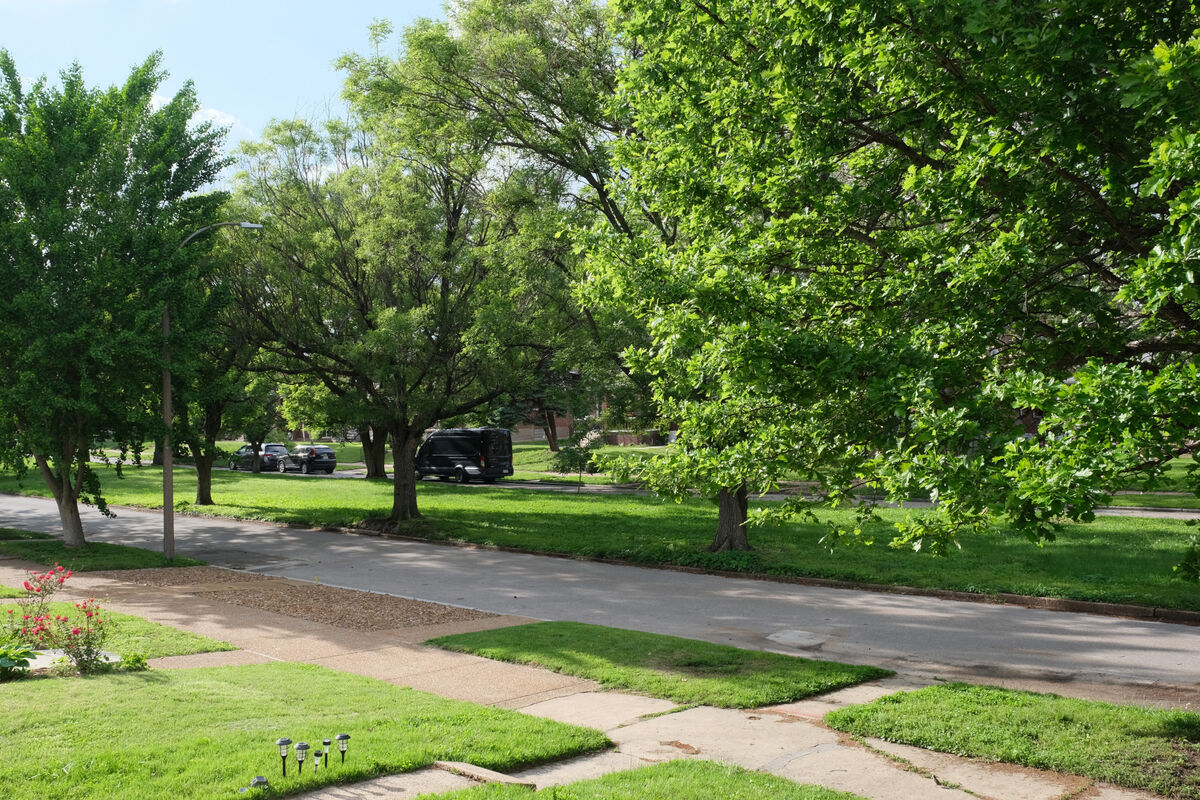Posts for: Ysarex
May 7, 2024 12:59:48 #
May 7, 2024 07:44:54 #
Calvary/Bellefontaine cemeteries in St. Louis are situated side by side in north city. Both are old and famous with many famous folks laid to rest. Calvary is bigger but Bellefontaine holds the larger collection of people who really had more money than they knew what to do with. A drive through Bellefontaine's 14 miles of road is surreal, almost other worldly. I've stopped by twice now, once in the rain (no photos) and two days ago with a blue sky. I plan to go back. Here's some first snaps. The 2nd photo needs only a 1 word introduction: Budweiser! The forth photo is one of Bellefontaine's newer mausoleums -- $5.5 million with no name attached. The family wishes to remain anonymous. I thought the whole point of having the biggest tombstone was to show who'd made it to the top. Fuji X-T4 w/16-55mm
May 7, 2024 07:01:13 #
They're putting the corn in. The visible landscape is about to undergo a dramatic makeover. Fuji X-T4 w/16-55mm
May 6, 2024 21:57:59 #
I've seen people living in every kind of shack, trailer, even school buses but this was a first for me. Fuji X-T4 w/16-55mm
May 5, 2024 12:09:52 #
BigDaddy wrote:
Yes, good enough for me. It was taken one handed on a ski lift with a 4 year old cell phone, sent to me via text as a 305 byte jpg file. You are crazy if you think I have a worry about it not being a 25 MB raw file.
That's all fine -- it's a good photo, but the technical flaws are really there.
BigDaddy wrote:
Furthermore, NO, I don't see any banding or blown out anything. I don't have X-ray superman eyes, and only an 8 bit monitor.
And I have normal vision at best when I wear my glasses. The banding in the sky is obviously visible. The blown red channel on the child's face is obviously visible. And they're really hard to fix in an editor. You don't see any of that and that's OK, but then you are operating with different standards and expectations. The photograph is most valuable for it's content and the tech flaws can be overlooked. But the two things are not exclusive. You can have good content and good IQ together. Good IQ enhances good content.
May 5, 2024 11:36:06 #
BigDaddy wrote:
The elephant in the room asks if you only capture raw files how do you know your jpgs are (always inferior).
Because the camera always makes one anyway and embeds it in the raw file.
BigDaddy wrote:
The second elephant wonders if you never capture a jpg and edit it, how do you know how it compares to your edited raw files.
Because I'm responsible to teach which I take seriously. I started teaching Photoshop to college/university students in 1992. When I get students who want or need to learn to edit JPEGs it's my job to do right by them and I do and I can.
BigDaddy wrote:
See answer to the first elephant.Myself, I wonder how you know your jpg highlights are "always" blown out if you only shoot raw?
May 5, 2024 11:29:19 #
BigDaddy wrote:
Simply, a JPG editor is a photo editor that edits ... (show quote)
In the past is correct.
BigDaddy wrote:
Ysarex said he uses clone tools and the like in his raw editor which is new to me. I'm waiting for some links on this subject.
I oft wondered why raw editors didn't have these sorts of tools. I guess because of the non-standard raw file types, but that's just a wild guess.
I oft wondered why raw editors didn't have these sorts of tools. I guess because of the non-standard raw file types, but that's just a wild guess.
The fundamental difference between a raw processor and raster editor: a raw processor works parametrically while a raster editor pushes pixels, a pixel editor. Raw processors save their work as a series of instructions -- a simple text file. They don't actually push pixels around. It is much more difficult to create good clone/heal tools parametrically and as you note correctly in the past that was the domain of raster editors. Raster editors are still more capable of that kind of work and still required for more extreme tasks like head replacement.
However the raw processor engineers have devoted considerable effort to the task in recent years and made a lot of progress. The parametric editing model has multiple advantages. First for me is that a properly engineered parametric editor can be 100% non-destructive. All raster editors are partially destructive. I avoid destructive editing if at all possible and with today's raw processors I can do that. It's one in a thousand photos where I still need the capability of a raster editor. I don't do head replacements. Utility wires and poles and a trash can on the lawn type stuff my raw processor handles easily now and in some ways more easily than a raster editor. Most importantly it's done non-destructively which the raster editor does not do. Take a look at the photo I posted of the airport here: https://www.uglyhedgehog.com/t-806249-9.html#14601824 Look at the clump of trees on the right edge and compare with the camera JPEG below. I cloned that clump of trees and moved it closer to the control tower -- no raster editor needed.
May 5, 2024 08:26:15 #
Got out yesterday early. Drove past the municipal airport in Cahokia Ill and then on to Columbia Ill. Fuji X-T4 w/16-55mm
May 5, 2024 08:10:39 #
BigDaddy wrote:
In Fact, cell phones today are a perfect example o... (show quote)
So that's a great family photo of good times -- well done! You listed things that could be corrected in editing with a raster editor. Begs the question then why didn't you do it? All three RGB channels in the photo are clipping and it shows in the photo. You don't care, it doesn't matter to you, or you can't see it and that's fine. Enjoy your photo. What you can't do is claim that it's technically just as good as if it were processed from a raw file by someone who knows what they're doing. Do you see the banding in the sky and how it changes color toward cyan as it nears the trees? That's because the blue channel is badly blown out. That's fine if you don't see it and/or it doesn't bother you. But it's there and no photographer would do that deliberately because they think it's good -- it's bad. Doesn't bother you, enjoy your photo it's a good captured moment.
Now if you didn't cause the clipping in all three RGB channels and don't have an original to revert to then you can't fix it in a raster editor. Clipped channels means data is missing and you have no data to edit. All you can do is take the blown data and darken it and that can look worse than leaving it blown.
May 5, 2024 07:41:14 #
DirtFarmer wrote:
Since I prefer comparing images using the blink test I took your downloaded images and put them into PS, aligned them and labelled them and made them into an animated gif. To see the animation, look at the download. You can see that they are two different photos from the cloud positions and some branch motion.
That would be SOOC JPEG and not raw preview. The raw processed and SOOC JPEG are from the same shutter click. The one you labeled in-camera is the camera HDR function.
May 4, 2024 23:24:13 #
larryepage wrote:
Understood. When you said that the JPEGs were all blown out, it sounded like you did not change the exposure. I still don't understand why they would be blown out...only the + compensated image should have spots with that problem, and I'd have expected a proper sky. When I do HDR externally, the sky always turns out correct. Peehaps a different metering choice would give better results.
The HDR JPEG is not blown out -- only the JPEG created when I set a proper exposure for the raw file. And you're right the HDR JPEG could be better with different metering. That's one of the problems with JPEGs that I don't suffer saving raw files. Interesting that with my Fuji once the HDR function was engaged the EVF metering aids were disabled. The highlight alert function just vanished. A further complication; the Fuji HDR function has 5 different setting levels, I picked the middle one. So obviously someone could work with and practice using that function and tune it in to do better. That's a lot of work to get a JPEG you'll still have to post process. Bottom line is that no matter how much you work with and tweak that HDR function it's still not going to deliver the same final result I got processing the raw file and that means post processing that JPEG is required. Screw that -- all that extra work to ultimately still get less, doesn't add up.
May 4, 2024 22:15:57 #
imagemeister wrote:
I will process the HDR JPEG just as I would PP ALL my other JPEGS so, it is NOT more work, does not take longer or be "more difficult" than PP-ing a raw file.
Yes it is. I started teaching Photoshop to college/university students in 1992. Then all we had to work with were film scans. When the first digital cameras showed up all we had to work with were JPEGs. It's harder and requires more skill to process an already processed RGB image than to start with a clean slate and process a raw file.
May 4, 2024 22:10:21 #
larryepage wrote:
You invalidate the test when you refuse to expose properly fir the HDR process. If you had not insisted on exposing to the right, the - compensated JPEG would have picked up the blue sky.
I only exposed the raw file I processed for the sensor. When I took the HDR JPEG I set the exposure per the camera meter zeroed -- "properly" as you say. Your assumption that I treated the exposure for the HDR JPEG the same as I did for the raw file I saved is incorrect. Sorry if I wasn't clearer about that.
larryepage wrote:
Other elements would have also ended up closer to ... (show quote)
I understand the picture control settings and am aware that I would need to use them if I wanted to get better JPEGs.
larryepage wrote:
Getting good JPEGs from a camera requires study, understanding, experimentation, and practice, just like learning to process with LightRoom or PhotoShop. So please don't try to make a case based on an incomplete experiment.
So your assumption about my test is wrong. You're right that getting good JPEGs is a whole lot more work than getting a perfect raw file exposure. That's one reason I don't save JPEGs. Why do all that extra work when I can avoid it and get a better final result to boot?
May 4, 2024 19:59:42 #
imagemeister wrote:
The 3 exposure HDR and the combining are all done IN CAMERA ( on Sony's) - nothing to do in PP but tweak it - like everything else - no MORE work than I would normally do .
99% of "advantages" of raw are irrelevant to 99% of viewers !
99% of "advantages" of raw are irrelevant to 99% of viewers !
I hear this a fair amount these days; that in-camera HDR is a viable alternative to capturing raw files so let's have a closer look at that.
I ran out front and grabbed a high-contrast-light snapshot. I took the photo as I normally would saving a raw file with the sensor exposed to capacity. Then I switched my Fuji X-T4 over to HDR mode. Like your Sony it takes 3 exposures in-camera, combines them and spits out a JPEG result. It's more work behind the camera if only to have to reconfigure the camera's exposure settings and in my case actually throw a physical switch. Normally I never mess with any camera settings that affect JPEG. I set the exposure for the sensor in the camera and click.
Let's look at the photos. (There's two camera JPEGs involved and for efficiency sake I'm just going to resize them not touching them in any other way.) First my processing of the single raw file that I captured. That's what the photo should look like. It's my photo. Note especially the blue sky.
Next the SOOC JPEG the camera made when I snapped that raw exposure. Like every JPEG that all my cameras make the highlights are blown to h*ll and the photo is wastebasket fodder. I expose the sensor to capacity, the JPEG processor chokes on that and screws the JPEG. To get good JPEGs from my cameras I would have to expose less. No I won't; less exposure = lower IQ. I admit I don't need that extra most of the time, but when I do I want to make sure I'm getting it.
Finally the third photo is the in-camera 3 exposure HDR. It doesn't look like my image processed from the raw file. It is however better than the camera JPEG the camera created when I exposed and saved the raw file. Many different cameras now have a similar in-camera HDR function. I've seen them and handled them as eventually they'd turn up in class in the hands of my students. They don't create the photo that I would have otherwise made myself, and that means they have to be post processed. The HDR JPEG didn't nuke the sky but it sure doesn't look like the sky in my version. It's too light and the wrong color. Post processing that HDR JPEG is going to be more work, take longer and be more difficult than the processing I did of the raw file for my version of the photo.
So what's this get you? I get better results with less effort. Where's the advantage when you get lesser results with more effort?
May 4, 2024 14:16:25 #
Mike1017 wrote:
So what are you saying you did not process the raw file? that's why it looks flat
Use quote reply so we'll know who you're responding to. If you're responding to me; I did process the raw file -- that's the first image posted. The image that looks flat and with the highlights blown out, second posted, is the camera created JPEG.
If the EXIF file numbering is confusing that's because I never save camera JPEGs when taking photos. But if I need one I just put the card back in the camera, bring up the raw original and push the menu option on the camera to spit out a JPEG -- it's the same JPEG the camera would have created when the photo was taken but it gets a new file number.
